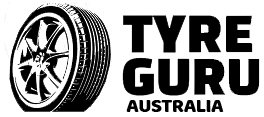The Pros & Cons of Different Tread Pattern
What are the Different Tyre Tread Patterns?
There are four types of tyre tread patterns. You may also see them called tread designs. Each one has a different purpose and is meant for different styles of driving.
The different tread patterns are defined by the design of the continuous ribs, grooves, independent tread blocks and sipes (the thousands of tiny grooves in the tread). The purpose and design of each is to provide traction and handling, limit road-noise and reduce wear to the tyre. When choosing a tyre, it’s vital to choose the tread pattern that best matches your use of the vehicle.
The Different Tyre Tread Patterns
- Symmetrical Tread Patterns
This is the most common tread pattern. It features a pattern of continuous grooves or blocks across the tyre. It’s a versatile tyre, ideal for standard or non-high performance passenger vehicles. This allows for multiple rotation patterns to extend the life of the tyre.
- Directional, or Unidirectional Tread Patterns
These tyres are designed with single-direction V-shape tread pattern to draw water through the treads and resist hydroplaning at high speeds. These tyres can be moved from the front axle to the rear axle to balance wear, but cannot be moved from one side of the car to the other unless remounted.
- Asymmetrical Tread Patterns
The tread pattern changes across the face of the tyre. This design blends the needs of dry grip traction with a pattern to draw water away for traction on wet roads. The outer side of the tyre features large treads for cornering and stability while the inner side has a smaller tread pattern to increase water dispersal and traction on snow and ice. The tyre typically has “This Side Out” molded into the sidewall (learn more about how to read a tyre sidewall here). It’s a tyre pattern most commonly used on sports cars and allows for multiple tyre rotation patterns.
- Directional and Asymmetrical Tread Patterns
These tyre tread patterns combine the directional V-shape that draws water away. Tyres with this tread pattern must be treated as directional tyres when it comes to rotating tyres.
Pros and Cons of Each Tread Pattern
Each tyre tread pattern has a specific purpose and use. For most drivers, a symmetrical tyre pattern works fine for daily driving. Other tyres provide different pros and cons based on where they will be used:
Tread Pattern | Pros | Cons |
Symmetrical | A common pattern, good handling, affordable and long-lasting with multiple rotation options. | Meant for daily use, not as effective on wet roadways, not a high-performance tyre. |
Directional or Unidirectional | Excellent for racing on wet tracks, great as all-season tyres on non-performance vehicles (especially in snow), promotes better fuel efficiency. | Rotation limitations usually mean they have a shorter life and higher cost than symmetrical tyres. |
Asymmetrical | Great handling around corners and excellent on wet roads, offers less road-noise than symmetrical tyres. | Shorter life, higher cost, and available typically for wheels 17 inches or above. |
Directional and Asymmetrical | Designed for high performance vehicles, ideal for sports cars. | These tyres can be hard to find, expensive, and have very specific usage rules, like directional tyres. |






